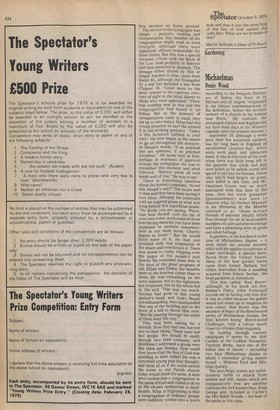Gardening
Michaelmas
Denis Wood
According to the Penguin Dictionary of Saints, the feast of St Michael and all Angels "originated in the annual commemoration of the dedication, before the seventh century of a church in his honour near Rome." (By contrast, the archangels Gabriel and Raphael did not have feast days in the Western calendar until the present century-) September 29, although a week later than the autumnal equinox, has for long been in England an established Quarter-day, when rents were paid, and labourers hired. It was at this time of the year when there was little keep left in the pastures that cattle and pigs were killed, to be salted, cured and spiced or put into ice-houses. Geese also, which feed largely on grass, were killed at this time, and Michaelmas Goose was so much associated with this time of the year, that the word gossamer (goosesummer) was used to describe what Sir Herbert Maxwell in his Memories of the Months referred to as "those myriad threads of extreme tenuity which flow through the air in incalculable numbers on calm autumn mornings and form a glistening mist on grass and other herbage . . ."
In gardens, in the borders it is the time of Michaelmas daisies — a term which my second sternest critic tells me applies to cultivars of Aster novi-belgii, a species introduced from the United States. Many of the best garden forms came from Ernest Ballard, but others descended from a seedling acquired from Edwin Becket, the head gardener at Aldenham.
This was called 'Red Rover' although, in his book An Innkeeper's Diary, John Fothergill records me as having told him that it was so called because the public would not stand up to magenta its true colour. Red Rover was the ancestor of many of the Beechwood series of Michaelmas daisies, the best known being Beech wood Challenger, with a colour much closer to crimson than magenta.
On looking through current catalogues it seems to me that Carliles of the Loddon Nurseries, Twyford, Berks., have one of the fullest lists of Asters — including two blue Michaelmas daisies to which I remember giving names myself — Mistress Ford and Mistress Quickly.
The novi-belgii Asters are unfortunately liable to attack from mildew and wilt. Asters which are comparatively free are amellus cultivars the well known blue, King George and, included in Carlile's list Mrs Ralph Woods — the best of the pinks in this class.
































 Previous page
Previous page